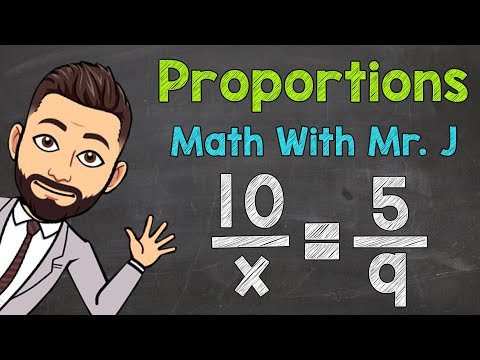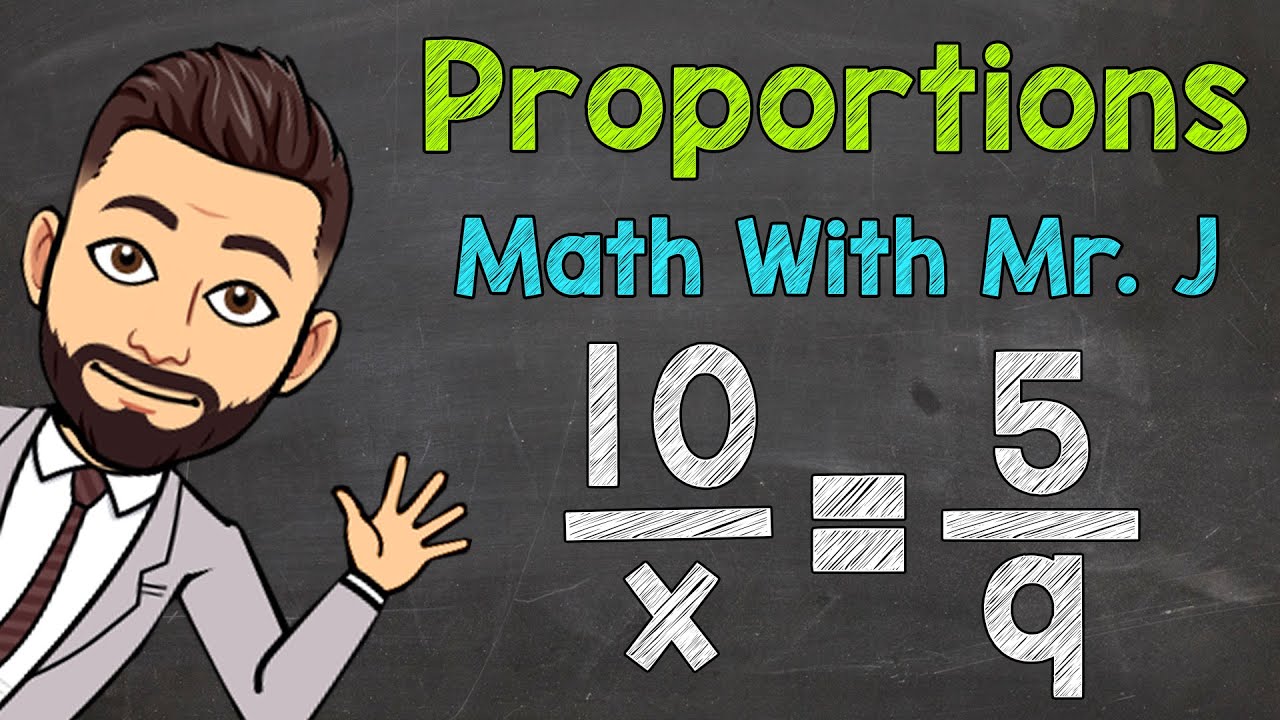A proportion in math is an intriguing concept that explores the relationship between numbers and their relative sizes. It delves into the idea of comparing two or more quantities and understanding how they are related to one another. Proportions are fascinating because they allow us to make predictions and solve problems by establishing equivalent ratios. By using the ratio of one set of numbers to another, we can determine whether or not the two sets are proportional. This notion of proportionality is not only applicable in mathematics but also in various real-life situations, such as scaling, map reading, and even cooking. Proportions enable us to understand the world around us in a more structured and meaningful way. They provide a mathematical framework for making predictions, analyzing data, and solving complex problems. The concept of proportion is an essential building block for further mathematical understanding, as it forms the basis for many advanced topics, including algebra, geometry, and calculus. By grasping the concept of proportion, we gain a deeper appreciation for the beauty and elegance of mathematics and its practical applications in our daily lives.

Understanding Proportions in Mathematics
| Concept | Description |
|---|---|
| Definition | A proportion is a mathematical statement that equates two ratios. It expresses the equality between two fractions or sets of numbers, emphasizing the relationship and balance between their respective parts. |
| Ratio | A ratio is a comparison of two quantities or numbers. It represents the relationship between these quantities, typically expressed in the form of a fraction or using the “colon” notation. Proportions rely on ratios to establish equivalence. |
| Proportional Relationships | Proportions are often used to describe proportional relationships, where the change in one quantity is directly related to the change in another quantity. For example, if the ratio of height to width of a rectangle remains constant, any change in height will result in a corresponding change in width. |
| Solving Proportions | To solve a proportion, we can use cross-multiplication or the multiplication/division property of equality. By finding the missing value that establishes the equality between the two ratios, we can determine the unknown quantity in the proportion. |
| Applications | Proportions are extensively used in various fields, such as finance, engineering, physics, and geometry. They help analyze and solve problems related to scaling, similarity, percentages, and various real-world scenarios involving direct or inverse relationships. |
| Golden Ratio | An intriguing application of proportions is the golden ratio (approx. 1.6180339887…), an irrational number that exhibits a unique proportion. This ratio is found in many natural and artistic phenomena, including the proportions of the human body, architecture, and even in famous artworks like the Mona Lisa. |
Solving Proportions: Unraveling the Variable Mysteries
Understanding Proportions in Math
Mathematics can often be a daunting subject for many individuals, but understanding the fundamental concepts is crucial for success. One such concept is proportions, which play a significant role in various mathematical calculations and real-life applications. In this article, we will explore what a proportion is, how it works, and its importance in mathematics.
What is a Proportion?
A proportion is a mathematical statement that indicates the equality of two ratios. In simpler terms, it is a way to compare two quantities and determine how they relate to each other. Proportions are often expressed in the form of fractions or ratios and are denoted by the symbol “:” or as an equal sign with a line separating the two ratios.
Ratio: A ratio is a comparison of two or more quantities that have the same units of measurement. For example, if we have a basket with 5 apples and 3 oranges, the ratio of apples to oranges would be 5:3.
Fraction: A fraction is a way to represent a part of a whole. It consists of a numerator (the top number) and a denominator (the bottom number). For example, if we have 2 red marbles out of a total of 5 marbles, the fraction representing the proportion of red marbles is 2/5.
How do Proportions Work?
Proportions work by comparing the relative sizes of two ratios. When we set up a proportion, we equate the two ratios to each other and solve for the unknown quantity. This allows us to determine how the two quantities relate to each other and find missing information.
Let’s take an example to understand this better. Suppose we have a recipe that requires 2 cups of flour and 3 cups of milk. If we want to make half the recipe, we can set up a proportion:
2 cups of flour / 3 cups of milk = x cups of flour / 1.5 cups of milk
By cross-multiplying and solving for x, we find that x equals 1 cup of flour. Hence, to make half the recipe, we would need 1 cup of flour and 1.5 cups of milk.
The Importance of Proportions in Mathematics
Proportions are not only essential in mathematical calculations but also have various real-life applications. They are used in a wide range of fields, including science, finance, engineering, and art.
Science: Proportions are crucial in scientific experiments, especially when determining the concentration of solutions or analyzing chemical reactions. Scientists use proportions to calculate the amount of reactants needed and the resulting products.
Finance: Proportions are used in finance to calculate interest rates, determine profitability, and analyze investment opportunities. Financial ratios, such as the debt-to-equity ratio or the return on investment, rely on proportions to assess the financial health of companies.
Engineering: Proportions play a vital role in engineering, particularly in designing structures and machines. Engineers use proportions to ensure the proper balance and dimensions of various components, ensuring the stability and functionality of their creations.
Art: Proportions are fundamental in art, particularly in drawing and painting. Artists use proportions to create realistic representations of objects, ensuring that the sizes and proportions of different elements are accurate and visually appealing.
Using Proportions to Solve Problems
Proportions provide a powerful tool for solving a wide range of problems in mathematics. Whether it’s determining unknown quantities, scaling up or down, or comparing different quantities, proportions offer a systematic approach to finding solutions.
When solving proportion problems, it is essential to follow a consistent approach. Start by identifying the known and unknown quantities and setting up the proportion equation. Then, cross-multiply and solve for the unknown quantity. Finally, check your solution by substituting it back into the original proportion and verifying that both sides are equal.
Practice is key to mastering the art of solving proportion problems. The more you engage with different scenarios and practice solving various types of proportions, the more confident you will become in your math skills.
Conclusion
Proportions are a fundamental concept in mathematics that allows us to compare and relate different quantities. They are expressed as ratios or fractions and help us solve problems, analyze real-life situations, and understand the world around us. By understanding proportions and their applications, we can enhance our mathematical abilities and apply them to various fields of study.

